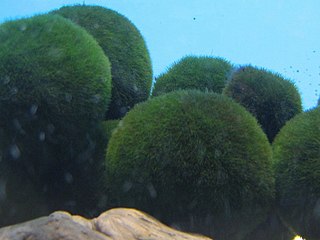
Marimo is a rare growth form of Aegagropila linnaei in which the algae grow into large green balls with a velvety appearance.
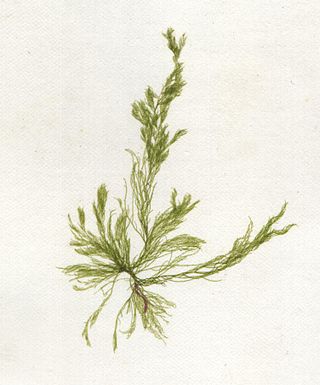
Cladophora is a genus of reticulated filamentous green algae in the class Ulvophyceae. They may be referred to as reticulated algae, branching algae, or blanket weed. The genus has a worldwide distribution and is harvested for use as a food and medicine.
Community aquaria are tanks that are designed to contain more than one species of fish. Most commonly they include a variety of species that do not normally occur together in nature, for example angelfish from Brazil, swordtails from Mexico, and gouramis from South East Asia. The aim of such communities is to bring together fish that are compatible in temperament and water requirements, while using their different colours and behaviors to add interest and entertainment value.
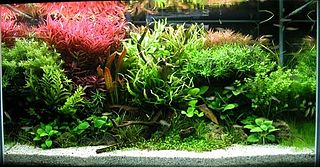
Aquascaping is the craft of arranging aquatic plants, as well as rocks, stones, cavework, or driftwood, in an aesthetically pleasing manner within an aquarium—in effect, gardening under water. Aquascape designs include a number of distinct styles, including the garden-like Dutch style and the Japanese-inspired nature style. Typically, an aquascape houses fish as well as plants, although it is possible to create an aquascape with plants only, or with rockwork or other hardscape and no plants.

Fishkeeping is a popular hobby, practiced by aquarists, concerned with keeping fish in a home aquarium or garden pond. There is also a piscicultural fishkeeping industry, serving as a branch of agriculture.
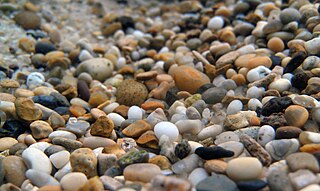
The substrate of an aquarium refers to the material used on the tank bottom. It can affect water chemistry, filtration, and the well-being of the aquarium's inhabitants and is also an important part of the aquarium's aesthetic appeal. The appropriate substrate depends on the type of aquarium; the most important parameter is whether the aquarium contains fresh water or saltwater.

Cabomba is an aquatic plant genus, one of two belonging to the family Cabombaceae. It has divided submerged leaves in the shape of a fan and is much favoured by aquarists as an ornamental and oxygenating plant for fish tanks. One species, Cabomba caroliniana, is a nationally declared weed in Australia, where it has choked up waterways after escaping from aquaria.

Audouinella, also known as black algae, is a widespread genus of red algae, found in marine and freshwater environments.
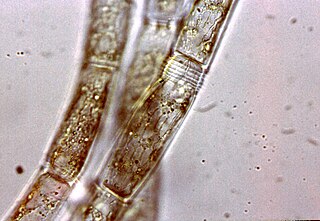
The Oedogoniales are an order of filamentous freshwater green algae of the class Chlorophyceae. The order is well-defined and has several unique features, including asexual reproduction with zoospores that possess stephanokont flagella: numerous short flagella arranged in a subapical whorl. The oedogoniales have a highly specialized type of oogamy, and an elaborate method of cell division which results in the accumulation of apical caps.
Algae eater or algivore is a common name for any bottom-dwelling or filter-feeding aquatic animal species that specialize in feeding on algae and phytoplanktons. Algae eaters are important for the fishkeeping hobby and many are commonly kept by aquarium hobbyists to improve water quality. They are also important primary consumers that relay the biomass and energy from photosynthetic autotrophes up into the food web, as well as protecting the aquatic ecosystem against algae blooms.
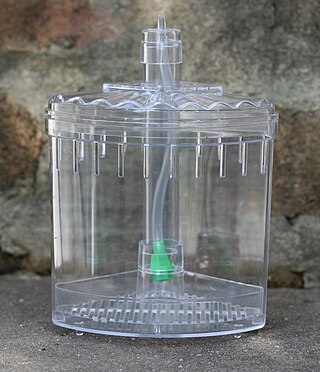
Aquarium filters are critical components of both freshwater and marine aquaria. Aquarium filters remove physical and soluble chemical waste products from aquaria, simplifying maintenance. Furthermore, aquarium filters are necessary to support life as aquaria are relatively small, closed volumes of water compared to the natural environment of most fish.

Ceratophyllum demersum, commonly known as hornwort, rigid hornwort, coontail, or coon's tail, is a species of flowering plant in the genus Ceratophyllum. It is a submerged, free-floating aquatic plant, with a cosmopolitan distribution, native to all continents except Antarctica. It is a harmful weed introduced in New Zealand. It is also a popular aquarium plant. Its genome has been sequenced to study angiosperm evolution.

An aquarium is a vivarium of any size having at least one transparent side in which aquatic plants or animals are kept and displayed. Fishkeepers use aquaria to keep fish, invertebrates, amphibians, aquatic reptiles, such as turtles, and aquatic plants. The term aquarium, coined by English naturalist Philip Henry Gosse, combines the Latin root aqua, meaning 'water', with the suffix -arium, meaning 'a place for relating to'.
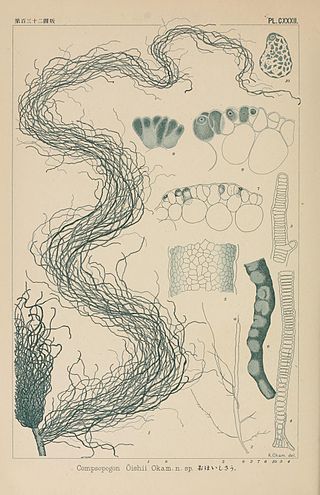
Compsopogon caeruleus, known as staghorn algae, is a species of red algae that lives in fresh water. It is a common nuisance in freshwater aquaria. It is the only species in the genus Compsopogon and the only representative of the family Compsopogonaceae. It is found in North America, South America, Europe, Africa, Asia, Australasia and Oceania. Compsopogon can tolerate a wide range of conditions in freshwater streams and occasionally in brackish lagoons and estuaries. It propagates by asexual spores.
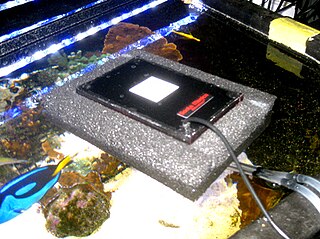
An algae scrubber is a water filtering device which uses light to grow algae; in this process, undesirable chemicals are removed from the water. Algae scrubbers allow hobbyists to operate their saltwater or freshwater tanks or ponds using natural filtration based on primary production, much as occurs in oceans and lakes.

The arrow goby is a species of goby native to marine and brackish waters of the Pacific coast of North America from British Columbia to Baja California. This species grows to a length of 6.4 centimetres (2.5 in) SL, though most do not exceed 4.2 centimetres (1.7 in) TL. This fish can also be found displayed in public aquaria. This species is the only known member of its genus.

Fontinalis antipyretica, greater water-moss, or common water moss, is a species of submerged aquatic moss belonging to the subclass Bryidae. It is found in both still and flowing freshwater in Europe, Asia, Greenland and Africa. In North America it is found in most Canadian provinces with a seaboard and most US states except the most southern.

Caloglossa is a genus of algae in the Delesseriaceae.

Caloglossa beccarii, known as red moss, is a species of algae that may live in freshwater or brackish environments. It is found in the aquarium trade.






















